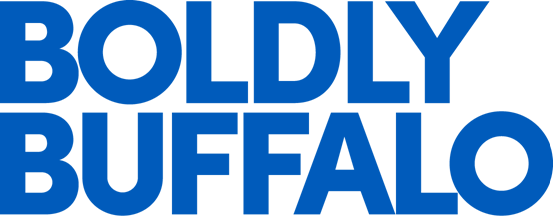Reimagining telehealth: Biomedical engineering students take first place in hackathon

MedCurrent is a telehealth app developed by Andra Sullivan, Bo Ibitayo and Samantha Seymour, which earned them a $2500 first place prize at D’Youville College’s 2020 Healthcare Hackathon.
By Nicole Capozziello
Published December 4, 2020
Long appointment wait times present a significant healthcare barrier for many American patients. Could technology help?

Andra Sullivan

Bo Ibitayo

Samantha Seymour
Three biomedical engineering students Andra Sullivan, Bo Ibitayo and Samantha Seymour thought so when they created their app MedCurrent, which earned them a $2500 first place prize at D’Youville College’s 2020 Healthcare Hackathon.
The hackathon paired 10 teams with community healthcare providers to develop tailored, innovative solutions for some of the area’s biggest healthcare problems.
“Being engineers, we’d toyed with the idea of joining traditional ‘hackathons,’ but had never participated in one before,” said Sullivan, a senior in the Department of Biomedical Engineering. “We liked that the D’Youville Healthcare Hackathon was oriented towards the ideation phase of designing a solution and was ultimately structured like a pitch competition. We saw the hackathon as a way to practice the product design and problem-solving skills we’ve learned throughout our biomedical engineering degree and apply it to a current real-world problem.”
The hackathon kicked off with each team being assigned a challenge. The first place team was tasked with utilizing telehealth and/or wearable technology in order to improve patients’ access to healthcare.
They started by asking, what specifically contributes to patients’ difficulty in accessing healthcare? Through preliminary research, as well as talking to a local physician at Erie County Medical Center, they zeroed in on the issue of wait times.
They found that, according to a 2017 survey, a new patient in a large U.S. city waits an average of 24 days for an appointment with a physician while in a medium-sized city, that wait time is 32 days.
“We wondered how we might streamline the physician-finding and appointment-booking process to reduce appointment wait times, thus increasing access to healthcare,” said the team. They spent the week conceptualizing and fine-tuning their proposed solution: a telehealth app called MedCurrent.
The app enables patients to easily report their symptoms and then get connected with the next-available physician for an appointment. It meets patient needs by presenting appointment options across physician practices, differentiating between telemedicine and in-person visits, and featuring real-time updates on availability so that cancelled slots can be filled.
“Instead of having to wait weeks for an appointment, during which symptoms most likely worsen, patients could use our app to quickly schedule a telehealth visit with their primary care provider, and then get referred to the appropriate specialist,” said Seymour, when the team presented their app on October 11.
While the team members are all busy with coursework for their senior year, they are not forgetting about the project – or what they learned.
“Though the MedCurrent app may sit on the backburner for now, we’re really excited about the potential implications this solution could have in improving access to healthcare, and we are open to taking the idea farther in the future,” said Ibitayo.
From initially hearing about the Hackathon up through presenting their final solution, the team really enjoyed collaborating. “When you take away the component of getting graded on your work, the project becomes more about your team’s passion for the field and you can get as creative as you want. That’s why it’s really important, as a student, to challenge yourself to get involved with opportunities like these.”

WiseWalker, a smart insole that tracks senior patients’ walking patterns, earned Lama Moukheiber and Mira Wassim third place in the Healthcare Hackathon.
A UB team also took third place, which was awarded $500. Lama Moukheiber and Mira Wassim, both master’s students in data science, were recognized for their project WiseWalker, a smart insole that tracks senior patients’ walking patterns.
“Our solution was definitely based on some coursework I did in biomedical engineering during my undergrad and data science in my masters,” said Moukheiber. “Combining knowledge from both domains helped us craft a feasible solution that can potentially have an impact on healthcare in our society.”
In addition to University at Buffalo students, the annual Healthcare Hackathon attracted nearly 50 participants, including students from D’Youville, Buff State, and local high schools, as well as industry professionals from backgrounds as diverse as law and nonprofit leadership. The event was held virtually from October 5-11.

